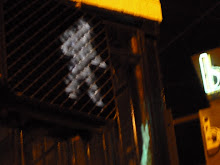South Africa … Cape Town, mostly
First, I should say that Cape Town is gorgeous. The landscape is green and sweeping, the mountains are majestic, and the sea smells amazing. Go a bit further north (about 15 miles) and you find wine country that looks like Napa and produces delicious wines I could drink every night. The beauty of this place makes it obvious why the Brits and the Dutch would want to colonize it. The stories of sailors and the Cape of Good Hope are inspiring. And the animals … well, South Africa is home to African “Jackass” penguins, the second smallest species of penguin … need I say more when it’s a family favorite animal?
We spent a day touring Soweto and the Apartheid Museum in Johannesburg on our way to Tanzania. When we came back to South Africa, we went straight to Cape Town. We spent a week there, enjoying the Victoria and Alfred Waterfront, touring the Cape Peninsula (Cape of Good Hope and Boulder’s Beach with the penguins), taking the cable car up Table Mountain, wine tasting in the Stellenbosch winelands, and visiting Robben Island (the former prison where Nelson Mandela and other political prisoners were held during the Apartheid regime). The one thing we didn’t get to do was tour a Cape Town township. After touring Soweto, we didn’t have the heart to go to another township, especially a shanty town with considerably worse conditions. Rumor has it, though, that the Cape Town townships give more hope for the future than the ones near Jo’berg despite the more difficult living conditions.
It was a hard country to visit. The Apartheid government has only been out of power for 12 years. The country has come such a long way in that short period of time … but has much, much further to go before it is “out of the woods.” One of the first things people tell you when you reach South Africa … especially Johannesburg, but other cities as well, the warning is just someone less urgent … is “watch out for personal safety at all times.” And they’re not joking – violent crime is not uncommon in this country. The motivation for much of it continues to be extreme poverty.
The majority of our information about culture and living conditions came from tour guides. And, admittedly, most of our tour guides were white males. If I had to guess age, I’d say mid-30 to just retired. The picture they painted of life in South Africa is pretty bleak – considerable crime, government corruption, affirmative action programs that make it difficult for white people to find jobs (and subsequent “flight” of educated white professionals), lack of infrastructure maintenance, and unequal wealth redistribution (money doesn’t reach all the sectors of the population that need it – any redistribution has created a new “black upper class”). The “Coloured” tour guide we had was much more hopeful. He told us of the increased business opportunities, the freedom to live wherever you want (and the fact that doesn’t seem to lead to more violence), more foreign investment in South Africa, more trade exports, and the government taking care of the poor by giving them housing and creating job opportunities. I think the truth is somewhere in the middle, but probably closer to the second portrayal than the first.
Never in my life have I wanted a personal guide to teach me how to live – other than the time we were in South Africa. I’d never traveled to a place where I didn’t know how to feel safe before. And the safety warnings, barbed wire everywhere, many security gates and electric fences, and admonitions not to walk anywhere at night made me feel unsafe. But many people who live here love the country and would not dream of leaving. “This beautiful sunshine – that’s why I could never leave South Africa,” said one girl from Pretoria who was staying in our hostel. And I want to know how to live with those extremes – with simultaneous hope and caution.

